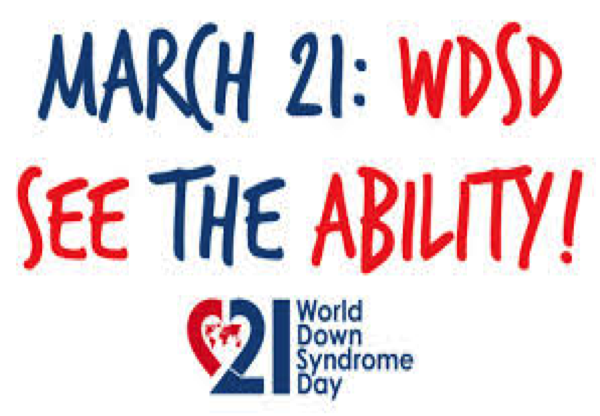March 21*‘ is World Down Syndrome Day. To mark the occasion, we tell you what Down Syndrome is all about, its causes, effects, treatment and more…

Down Syndrome also known a trisomy 21, is a common chromosome abnormality that occurs amongst new-borns when they have a full or partial extra copy of chromosome 21 (the nucleus of each cell is typically supposed to have 23 pairs of chromosomes). This happens because of a process known as ’nondisjunction’, i.e. when genetic materials fail to separate during the formation of the nuclei. Usually, this extra chromosome comes from the mother. The addition of this genetic material changes the development pattern and manifests itself thorough various characteristics which are associated with Down Syndrome. One of the leading causes of mental retardation, the incidence of Down Syndrome, worldwide is one in every 1,000 people.
Physical Characteristics of Down Syndrome
- Children, who have been diagnosed with Down Syndrome, typically have dysmorphic facial features which include up slanting eyes (palpebral fissures and epicanthic folds), flat facial profile, flat nasal bridge, irregularly shaped (folded or dysplastic) ears which are usually low-set, a relatively large tongue in comparison to the mouth and decreased muscle tone.
- They also have the ability to extend the joints beyond the usual capacity and have short broad hands and sandal gap toes (a large spacing between the big toe and its neighbouring toe).
Associated Problems of Down Syndrome
- About 40-50% of children afflicted with Down Syndrome have associated malformation in other organs like the heart (congenital heart disease) or the gastrointestinal tract (intestinal abnormalities).
- They are also more prone to developing Alzheimer’s, leukaemia, seizure disorders, sleep apnea and skin disorders.
- 60-80% have hearing defects.
- They tend to have several eye related problems and develop obesity in their adolescence and early childhood.
- Thyroid function and skeletal problems also occur at a higher frequency in children with Down Syndrome.
- One of the biggest challenges faced by parents is the intellectual disability that such children suffer from.
Medical research has hypothesized that prenatal interventions will give these children a better chance at improving their cognitive functioning. The clinical diagnosis of Down Syndrome, however, is confirmed by genetic tests.
High Risk Pregnancies
- Down Syndrome usually occurs in children who are born to elderly mothers, i.e. 35 years and above. However, this is not set in stone. It could also occur in children born to young mothers if there is a genetic history of Down Syndrome in the family.
- Therefore, during pregnancy, during the 11″‘ and 12″‘ week, it is imperative to undergo screening. This can be done through a blood test and an ultrasound.
- These tests are usually done on women who are at a lower risk of conceiving a child with Down Syndrome.
- However, amongst high risk candidates, definitive tests including alpha fetoprotein (AFP), nuchal translucency screening (NT), amniocentesis and chorionic villus sampling (CVS) are conducted.
Treatment For Down Syndrome
- While there is no cure for children who are suffering from Down Syndrome, early medical support and developmental interventions can go a long way in improving the quality of their life.
- Regular check-ups with health professionals to monitor mental and physical growth, timely intervention, be it physiotherapy, counselling or special education, can help meet the healthcare needs of children with Down Syndrome.
- Community-based support systems like special schools also enable the participation of children with Down Syndrome into mainstream society and help in the fulfillment of their personal potential. Life expectancy for children with Down Syndrome has improved noticeably in recent decades.
- Nowadays, cardiac surgery, vaccinations, antibiotics, thyroid hormones, leukaemia therapies, and anti-convulsive drugs have significantly improved the quality of life of individuals with Down Syndrome. The life expectancy that was hardly 30 years in the 1960s has now increased to more than 60 years of age.
Support For Families
Families who have children with Down Syndrome have to be actively counselled about what the condition entails.
The caregivers need to be made aware of the different issues that such children will face, and should be given a fair idea of the course of development that such children will go through.
Due to the fact that children with Down Syndrome suffer from mild mental retardation, early intervention can help. They can be taught to do simple repetitive tasks.
As the condition is incurable, these children need to be handled with patience, love and care. They will not be able to function like normal children and expecting them to do so is also inhumane.
While communicating with them might be a challenge, they have a very gentle temperament. A positive attitude on the part of the caregiver is instrumental in ensuring the development of children with Down Syndrome.
It can get tiring and frustrating but one has to be patient in their approach. Acceptance of the condition will make it easier for the child to adapt to his or her surroundings.
Genetic counselling plays a central role in the management of children with Down Syndrome. Counselling has to be an ongoing process as it is complex and each case is challenging in its own right.
Councelling For Down Syndrome Matters
50 years after the discovery of the origin of trisomy 21, people with this disorder continue to suffer the consequences of an extra copy of chromosome 21. Compromised well-being and the presence of cardiac disorders and other health problems, including cognitive dysfunction, place these people outside of the mainstream, even in highly advanced cultures. However, recent advances show that it may be possible soon to decipher the underlying genetic and molecular bases for their disability and for creating effective treatments. Continued and increasing investments in research on the genetic and molecular basis of trisomy 21 promise to transform the lives of these individuals and the communities in which they live.